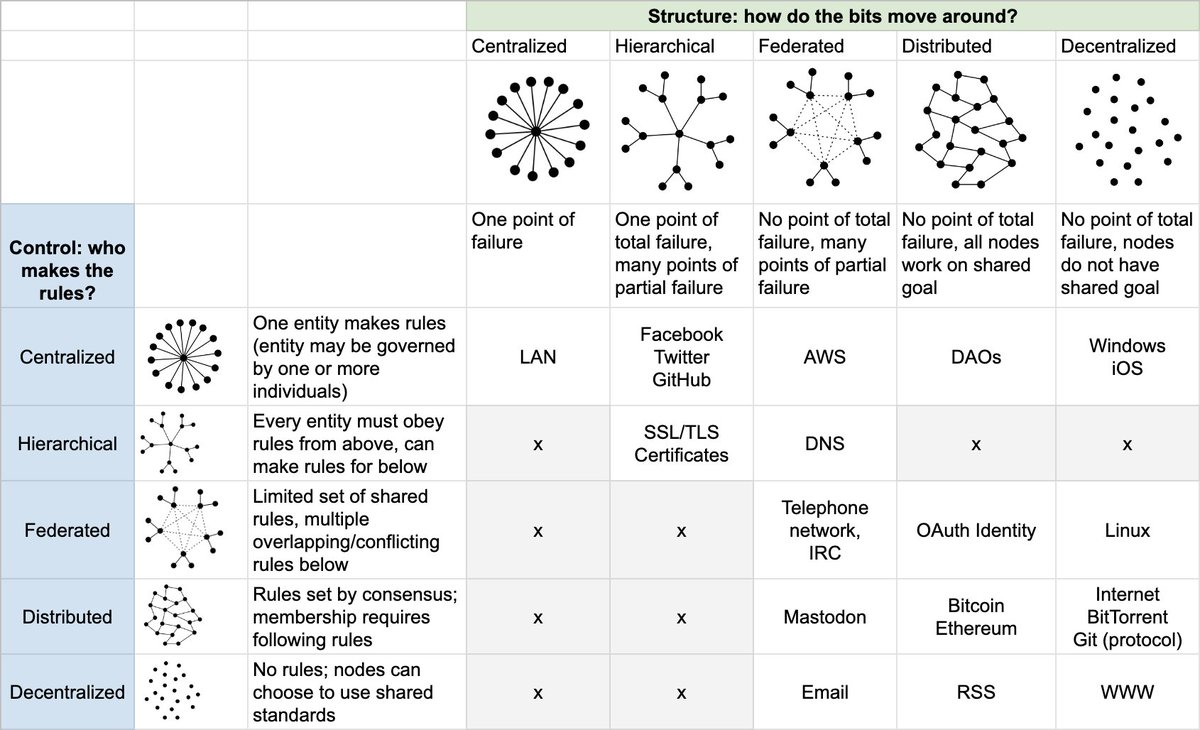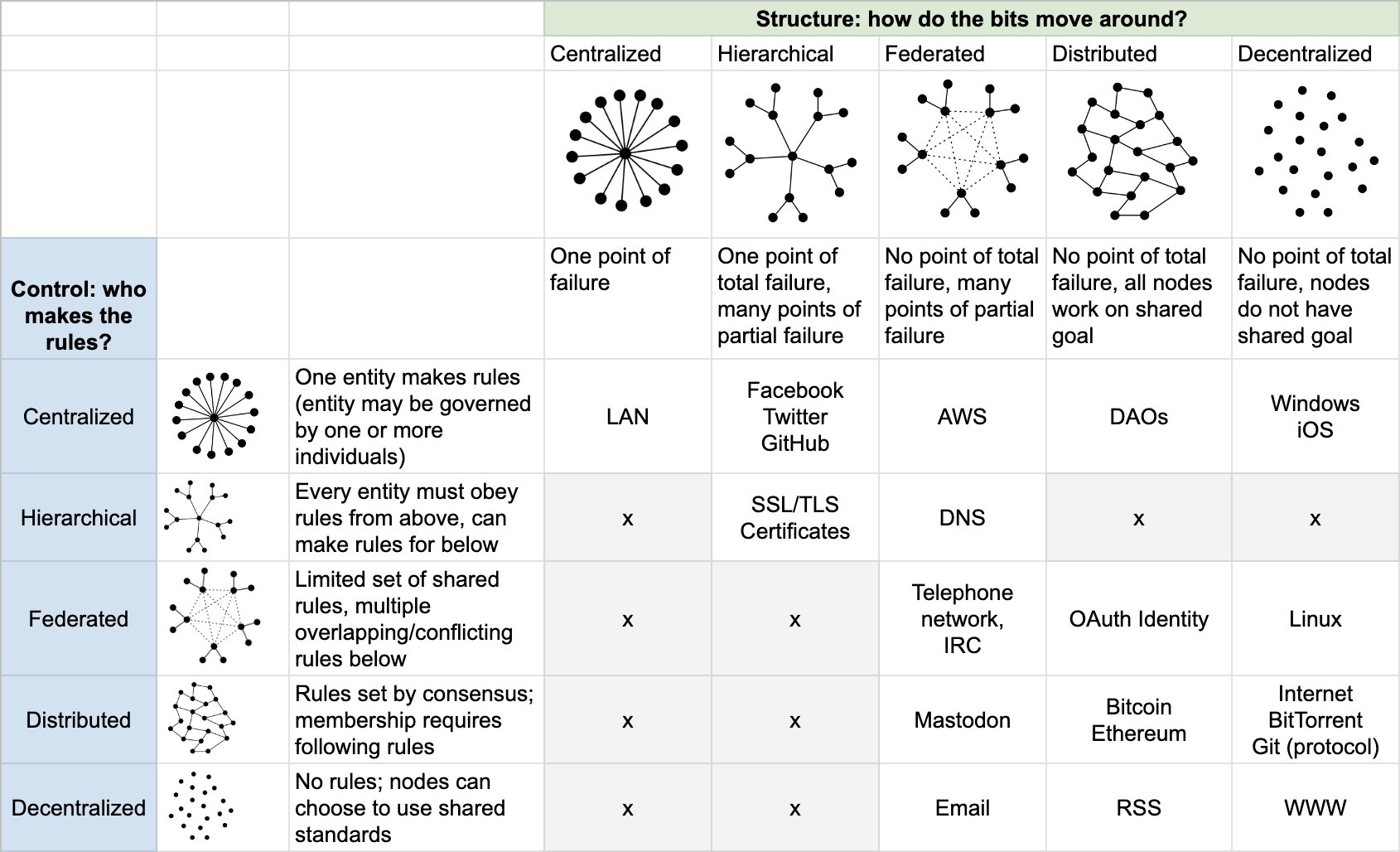Similarly, you must give up the assumption that there are privileged places, notes of special and knowledge-ensuring quality. Each note is just an element that gets its value from being a part of a network of references and cross-references in the system. A note that is not connected to this network will get lost in the Zettelkasten, and will be forgotten by the Zettelkasten.
This section is almost exactly the same as Umberto Eco's description of a slip box practice:
No piece of information is superior to any other. Power lies in having them all on file and then finding the connections. There are always connections; you have only to want to find them. -- Umberto Eco. Foucault's Pendulum
See: https://hypothes.is/a/jqug2tNlEeyg2JfEczmepw
Interestingly, these structures map reasonably well onto Paul Baran's work from 1964:

The subject heading based filing system looks and functions a lot like a centralized system where the center (on a per topic basis) is the subject heading or topical category and the notes related to that section are filed within it. Luhmann's zettelkasten has the feel of a mixture of the decentralized and distributed graphs, but each sub-portion has its own topology. The index is decentralized in nature, while the bibliographical section/notes are all somewhat centralized in form.
Cross reference:<br /> Baran, Paul. “On Distributed Communications: I. Introduction to Distributed Communications Networks.” Research Memoranda. Santa Monica, California: RAND Corporation, August 1964. https://doi.org/10.7249/RM3420.
 Link to tweet:
Link to tweet: 